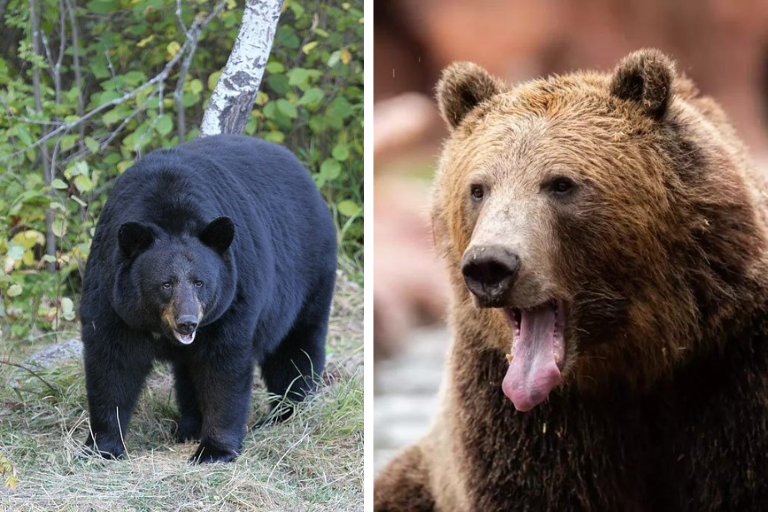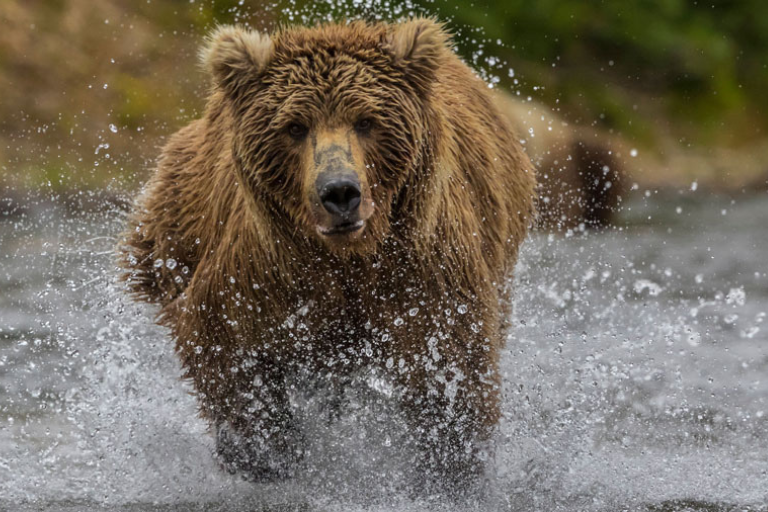Encountering a bear in the wild can be a heart-pounding experience, but with the right knowledge and preparation, you can increase your chances of staying safe. In this guide, we’ll discuss practical tips on how to survive a bear encounter and what steps to take if things don’t go as planned. Remember, being informed and staying calm are key to navigating these situations.
Know Your Bear Species
Understanding the different types of bears you might encounter is crucial. In North America, the two most common species are black bears and grizzly bears. Black bears are generally less aggressive, while grizzly bears can be more territorial and potentially dangerous. Knowing which species is prevalent in the area you’re exploring will help you tailor your response.

Make Noise and Travel in Groups
Bears are more likely to avoid humans if they are aware of their presence. When hiking, especially in dense vegetation or around blind corners, make noise by talking or clapping your hands. Traveling in groups can also deter bears, as they’re less likely to approach larger numbers of people.
Carry Bear Spray
Bear spray is a highly effective tool for deterring bear attacks. It’s a specially formulated pepper spray designed to create a temporary barrier between you and the bear. Learn how to use it properly before heading into bear country and keep it easily accessible, like on your hip belt or chest strap.
Recognize Bear Behavior
Understanding bear body language can provide essential cues about their mood. If a bear is standing on its hind legs, it’s often trying to get a better look and isn’t necessarily about to attack. However, if a bear charges or moves closer with ears laid back and hackles raised, it may feel threatened and you should prepare for an encounter.
Stay Calm and Avoid Eye Contact
If you do encounter a bear, stay calm. Avoid direct eye contact, which can be perceived as a threat. Speak in a calm, assertive voice and back away slowly without turning your back. Running could trigger a chase response.

Play Dead (For Grizzly Bears)
If a grizzly bear charges and makes contact, playing dead is often the best strategy. Lie flat on your stomach with your hands clasped behind your neck to protect it. Spread your legs to make it harder for the bear to flip you over. Stay still and remain silent until you’re certain the bear has left the area.
Fight Back (For Black Bears)
Contrary to grizzlies, black bear attacks are usually predatory in nature. If a black bear attacks, fight back with all your might. Use any available objects, like rocks or sticks, to fend off the bear. Aim for the bear’s face, eyes, and snout.
Prepare for the Worst
In the unfortunate event that a bear attack results in injury, having a first aid kit on hand can be a lifesaver. Knowledge of basic first aid can help you manage wounds until help arrives. Carrying a personal locator beacon (PLB) can also expedite rescue efforts in remote areas.
Encountering a bear in the wild is a situation that demands preparation, caution, and the ability to respond appropriately. While most bear encounters end without harm, understanding bear behavior and having a plan can mean the difference between a safe encounter and a dangerous one. Remember, your safety and the bear’s well-being are interconnected, and practicing responsible behavior in bear habitats benefits everyone involved.



GIPHY App Key not set. Please check settings